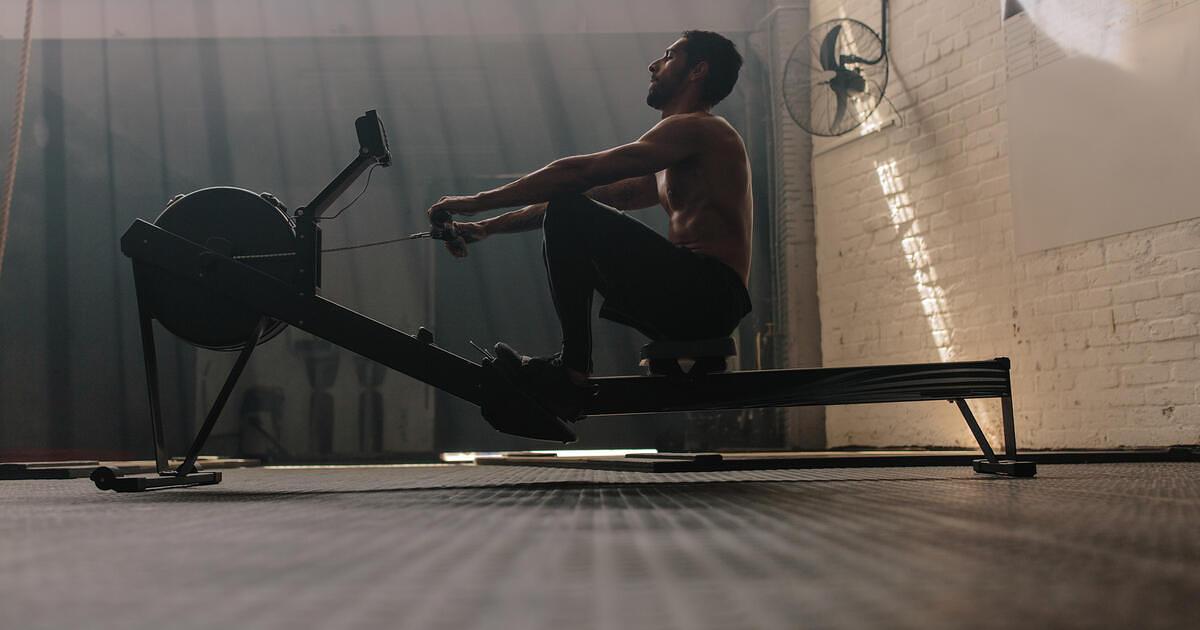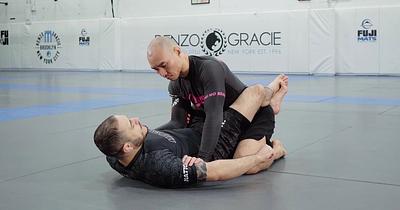The Science of Conditioning for BJJ: Understanding Energy Systems
by Team Digitsu
Updated: March 24, 2025

If your goal is to get better at Brazilian Jiu-Jitsu (BJJ), most of your time should be spent training BJJ. BJJ is a highly technical sport; you get conditioning through training. However, if you're already training BJJ 4x-5x a week, adding specific conditioning workouts can supplement your training. Balancing this into your training can be difficult, and different strategies depending on your goals.
Benefits of incorporating conditioning workouts with BJJ
Incorporating specific conditioning into your BJJ training can help improve overall performance and give you a competitive edge. Conditioning can help increase your endurance, strength, and power, allowing you to train harder for extended periods. Additionally, having good cardiovascular and muscular endurance can help you maintain a higher level of intensity throughout your training sessions, which can help you develop better technique.
Maintaining a high level of conditioning can also help you keep up with the match's pace, allowing you to make wise and quick decisions in competition or sparring. Furthermore, it can help you to recover faster after a match or training session and reduce the risk of injury.
Challenges of Conditioning Programs for BJJ
BJJ is a mixed sport that relies on all different energy systems, including the immediate anaerobic alactic (ATP-CP) energy system, the short-term anaerobic lactic (glycolytic) energy system, and the long-term aerobic energy system.
- Anaerobic Alactic (ATP-CP) Energy System (High Intensity – Short Duration/Bursts): Immediate, less than 10-second bursts of maximum activity.
- Anaerobic Lactic (Glycolytic) Energy System (High to Medium Intensity – Uptempo): Short term, 40-60 seconds of intense activity.
- Aerobic Energy System (Low Intensity – Long Duration – Endurance): Longer term, any duration greater than one minute, up to hours.
The aerobic energy system should be a focus, especially during general phases of conditioning, as it is used primarily in BJJ, and has the highest capacity to be improved through training. Studies have shown that the aerobic energy system contributes most of the energy required for BJJ matches.
The lactic system kicks in once the aerobic energy system is overwhelmed, so workouts targeting the lactic energy system are more useful when preparing for competition. These workouts involve short, high-intensity bursts of activity and can help improve power and speed.
The alactic energy system, which is highly genetic, is used for short, maximum-effort activities such as takedowns, throws, and explosive movements. Workouts targeting this energy system can be most helpful in the weeks before a competition.
One of the challenges of creating effective conditioning programs for BJJ is selecting exercises and activities specific to the sport and replicating the demands of BJJ. Additionally, it is vital to consider the timing and frequency of the conditioning workouts and how they will impact your BJJ training schedule.
Aerobic Energy Capacity Training for BJJ
The aerobic energy system is crucial for BJJ as it provides energy for sustained, moderate-intensity activity. The goal of aerobic energy system workouts for BJJ is to improve cardiovascular endurance and build the vascular network of capillaries to the muscles being used for greater oxygen delivery.
While technically, doing something like a low-intensity 30-minute run would work this energy system, it is better to use BJJ-specific movements, drills, or whole-body exercises. This approach can help to maintain focus and interest, as well as to replicate the demands of the sport better.
Wear a heart monitor such as WHOOP and aim to keep your heart rate between 120-150 BPM, no higher. This will ensure that you work in the appropriate intensity zone to target the aerobic energy system.
Using machines: - Accumulate 30+ minutes total work time - Use cardio equipment that use the whole body and rotate machines if possible. For example, 15 Minutes Assault bike, 15 minutes rower, and then 15 minutes Ski Erg.
Using BJJ Solo Movements:
- Shadow Wrestling with sprawls and shots
- Breakfalls to technical stand-up
- Shrimping and Reverse Shrimping
- Wrestling Sit-outs
- Bridging
- Knee on belly switches with dummy / heavy bag.
Making sure your heart rate stays between 120-150 BPM, you can perform each for 5 minutes in any order that makes sense. This approach has the benefit of being more specific to BJJ movements. Ideally, you would use a partner to do more BJJ-specific movements such as leg drags, guard passes, etc., but it's unlikely you'll find someone willing to be a dummy for 30 minutes straight!
Anaerobic Lactic Capacity Training For BJJ
Anaerobic Lactic Capacity workouts make sense when preparing for a competition. This energy system is used once the aerobic energy system is overwhelmed and your heart rate exceeds 150 bpm. These workouts are designed to improve the body's ability to produce and clear lactate, a byproduct of intense exercise that can cause fatigue.
Some examples of workouts that can help improve anaerobic lactic capacity include:
Shark Tanks: These are a great way to work on the lactic acid energy system in the weeks leading up to competition and force you to use BJJ-specific muscles. They also have the benefit of challenging you mentally. - One person is down for 6 minutes. Every 2 minutes, bring in a new person that immediately starts working from an advantageous position. The fresh person pushes the pace forcing the person in the shark tank to move.
Using Cardio Machines: Full-body cardio machines like assault bikes, rowers, or ski ergs for high-intensity interval training (HIIT) can help improve anaerobic lactic capacity. For example, 30 seconds all out, followed by 30 seconds of recovery, repeat for 10-15 minutes.
Sprinting: Short sprints of 20-40 yards at max effort can also work on anaerobic lactic capacity.
It is essential to note that these high-intensity workouts should be included in your routine in moderate quantities as they can tax your body and should be combined with recovery and rest days.
Anaerobic Alactic Energy Capacity Training for BJJ
Anaerobic alactic energy capacity is the most difficult to improve and has a strong genetic component. The energy system is used for short, maximum-effort activities such as takedowns, throws, and explosive movements. However, taking Creatine Monohydrate supplements can increase this capacity, though the improvements from such supplementation are pretty minor. Training this energy system specifically before a competition can have benefits.
These workouts should be performed as short sprints, with exercises lasting 10-15 seconds and 60-90 seconds rest for 6-8 reps. Some good exercises to improve anaerobic alactic energy capacity include sprints, prowler/sled pushing, agility drills, medicine ball throws/slams, squat jumps, and explosive burpees (jump high).
Scheduling Conditioning Workouts With BJJ Training
As previously mentioned, if you had to choose between BJJ or conditioning, adding in conditioning workouts is not recommended until you are already training BJJ 5x a week and have one day of total rest. One general guideline is to avoid having two consecutive high-intensity training days. If time permits, it'd also make sense to have 1-2 Strength/Power workouts, specifically in the general schedule.
Here is an example of a general weekly schedule for conditioning, assuming you are training BJJ 5x a week:

If you are closer to competition within 4-6 weeks away, here are some modifications to your schedule to focus on other energy systems:

If your schedule allows, you can also add a light aerobic conditioning workout to the specific schedule.
Remember that this is just a general example, and each individual's schedule may vary depending on their personal goals and schedule. The most critical factor is prioritizing consistent BJJ training and ensuring that your conditioning program fits into that schedule.
Additionally, it's important to note that this article does not include strength and power workouts. Strength and power workouts would be more prevalent during the general phase and less so closer to competition. It's essential that consistent BJJ training should be prioritized before adding strength/power-specific conditioning.
Conclusion
Incorporating specific conditioning into your Brazilian Jiu-Jitsu (BJJ) training can provide various benefits, such as improved endurance, strength, and power, and give you a competitive edge. However, it is important to balance your conditioning with your BJJ training and create a program tailored to your specific needs and goals. Understanding the energy systems that BJJ relies on and targeting those specific energy systems through your conditioning workouts. The aerobic energy system should be a focus during the general phases of conditioning, and the capacity for the other energy systems should be prioritized during the preparation for competition. As always, if your overall goal is to get better at BJJ, it's recommended to focus on consistent BJJ training and to only add supplemental conditioning to your plan after being able to maintain training BJJ 4x-5x a week.


